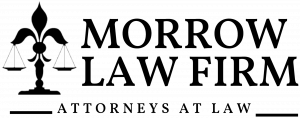
Proving Negligence in a Car Accident
"Negligence is the foundation of many personal injury claims, including car accidents," explains William P. Morrow. "Establishing negligence involves demonstrating that a driver failed to exercise reasonable care, leading to an accident and resulting in injuries or damages."
Understanding Negligence
Negligence in a car accident case refers to a driver’s failure to act with the level of care that a reasonably prudent person would exercise under similar circumstances. This failure can manifest in various forms, such as speeding, distracted driving, or violating traffic laws. To prove negligence, it is essential to establish four key elements: duty of care, breach of duty, causation, and damages.
Elements of Negligence
Duty of Care Every driver has a legal duty to operate their vehicle safely and follow traffic laws to prevent harm to others on the road. This duty of care extends to other drivers, passengers, pedestrians, and property.
Breach of Duty A breach of duty occurs when a driver fails to meet the expected standard of care. This can involve actions such as running a red light, texting while driving, or failing to yield the right of way. Proving a breach of duty requires showing that the driver’s actions were not in line with what a reasonably prudent driver would have done in similar circumstances.
Causation Causation links the breach of duty directly to the accident and resulting injuries or damages. It must be shown that the driver’s negligent actions were the primary cause of the accident. This element often involves demonstrating that, but for the driver’s negligence, the accident would not have occurred.
Damages The final element involves proving that the accident caused quantifiable damages, such as medical expenses, lost wages, property damage, and pain and suffering. Without demonstrable damages, a negligence claim cannot be successful.
Gathering Evidence
Effective evidence collection is crucial in proving negligence in a car accident case. Various types of evidence can be used to establish the elements of negligence:
Police Reports Police reports often contain valuable information about the accident, including the officer’s observations, witness statements, and any citations issued at the scene. These reports can help establish the facts of the case and provide an objective account of the incident.
Witness Testimonies Witnesses who saw the accident occur can provide critical testimony regarding the actions of the drivers involved. Their statements can corroborate claims of negligence and help paint a clear picture of how the accident happened.
Photographs and Videos Visual evidence from the accident scene, such as photographs and videos, can be compelling in demonstrating the circumstances leading up to the accident. Images of vehicle damage, road conditions, and traffic signals can all support a negligence claim.
Expert Testimony Expert witnesses, such as accident reconstruction specialists, can provide professional analysis of the accident. They can explain how the crash occurred, the forces involved, and whether a driver’s actions were likely to have caused the accident.
Medical Records Medical documentation is essential for proving the extent of injuries sustained in the accident. Detailed medical records and reports from healthcare providers can link the injuries directly to the accident and quantify the damages.
Traffic Laws and Regulations Demonstrating that a driver violated specific traffic laws or regulations can be instrumental in proving a breach of duty. Evidence of traffic violations can help establish that the driver failed to exercise reasonable care.
Legal Process
Navigating the legal process of proving negligence in a car accident involves several steps:
Filing a Claim The injured party must file a claim with the at-fault driver’s insurance company. This claim should include all relevant evidence and documentation supporting the negligence claim.
Negotiating with Insurance Companies Insurance companies often attempt to minimize payouts by disputing liability or the extent of damages. It is crucial to have comprehensive evidence and legal representation to negotiate effectively and secure fair compensation.
Filing a Lawsuit If negotiations with the insurance company are unsuccessful, the next step is to file a lawsuit. The lawsuit will formally present the case to the court, and the legal process will involve discovery, depositions, and possibly a trial.
Proving Negligence in Court During the trial, the plaintiff’s legal team must present evidence to establish the four elements of negligence. This involves calling witnesses, presenting expert testimony, and submitting physical evidence. The goal is to convince the judge or jury that the defendant’s negligence directly caused the accident and resulting damages.
Conclusion
Proving negligence in a car accident case is a complex process that requires a thorough understanding of legal principles and meticulous evidence collection. William P. Morrow and the team at Morrow Law Firm are dedicated to helping clients navigate this challenging process and achieve the justice they deserve. Establishing negligence involves demonstrating a duty of care, a breach of that duty, causation, and quantifiable damages. With the right legal support and a comprehensive approach to evidence gathering, injured parties can successfully prove negligence and secure the compensation they need to recover from their injuries.
Morgan Thomas
Rhino Digital, LLC
+1 504-875-5036
email us here
Visit us on social media:
Facebook
EIN Presswire does not exercise editorial control over third-party content provided, uploaded, published, or distributed by users of EIN Presswire. We are a distributor, not a publisher, of 3rd party content. Such content may contain the views, opinions, statements, offers, and other material of the respective users, suppliers, participants, or authors.



